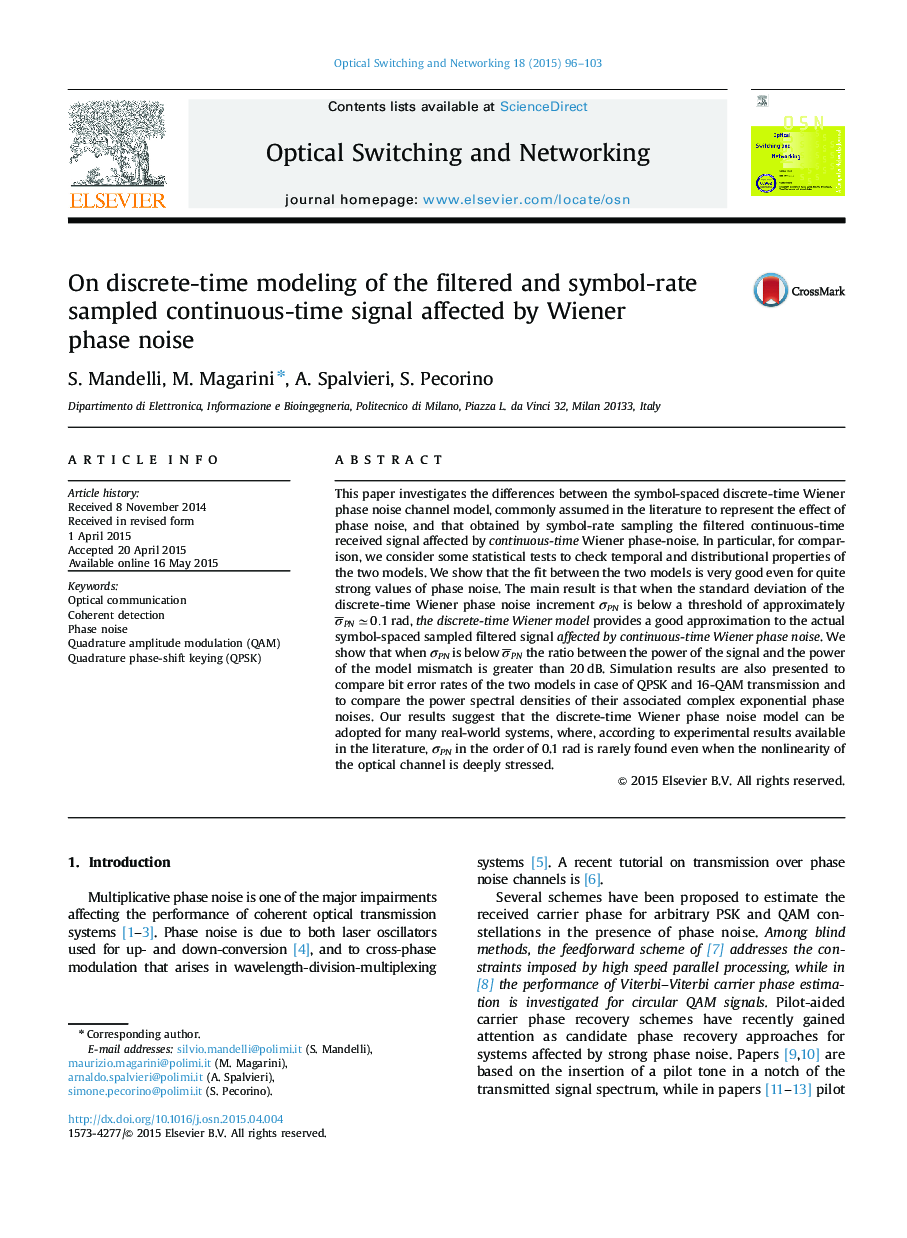| Article ID | Journal | Published Year | Pages | File Type |
|---|---|---|---|---|
| 10343995 | Optical Switching and Networking | 2015 | 8 Pages |
Abstract
This paper investigates the differences between the symbol-spaced discrete-time Wiener phase noise channel model, commonly assumed in the literature to represent the effect of phase noise, and that obtained by symbol-rate sampling the filtered continuous-time received signal affected by continuous-time Wiener phase-noise. In particular, for comparison, we consider some statistical tests to check temporal and distributional properties of the two models. We show that the fit between the two models is very good even for quite strong values of phase noise. The main result is that when the standard deviation of the discrete-time Wiener phase noise increment ÏPN is below a threshold of approximately ϯPNâ0.1rad, the discrete-time Wiener model provides a good approximation to the actual symbol-spaced sampled filtered signal affected by continuous-time Wiener phase noise. We show that when ÏPN is below ϯPN the ratio between the power of the signal and the power of the model mismatch is greater than 20 dB. Simulation results are also presented to compare bit error rates of the two models in case of QPSK and 16-QAM transmission and to compare the power spectral densities of their associated complex exponential phase noises. Our results suggest that the discrete-time Wiener phase noise model can be adopted for many real-world systems, where, according to experimental results available in the literature, ÏPN in the order of 0.1 rad is rarely found even when the nonlinearity of the optical channel is deeply stressed.
Related Topics
Physical Sciences and Engineering
Computer Science
Computer Networks and Communications
Authors
S. Mandelli, M. Magarini, A. Spalvieri, S. Pecorino,
